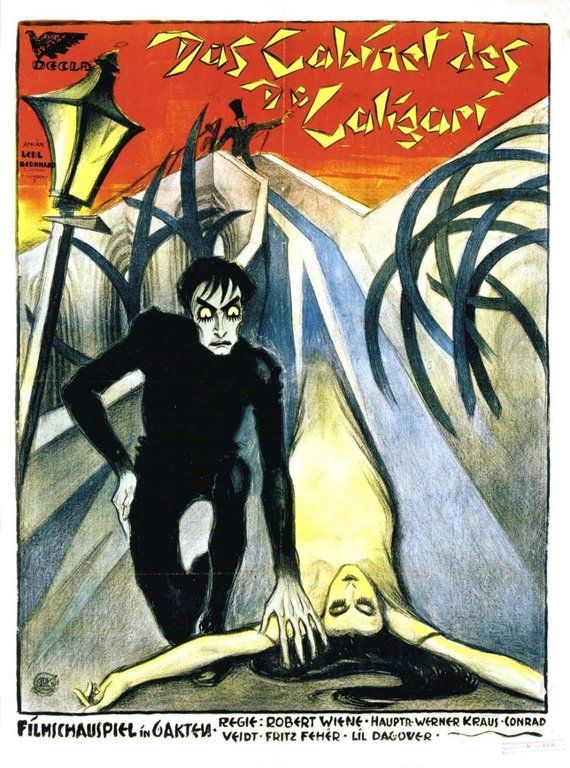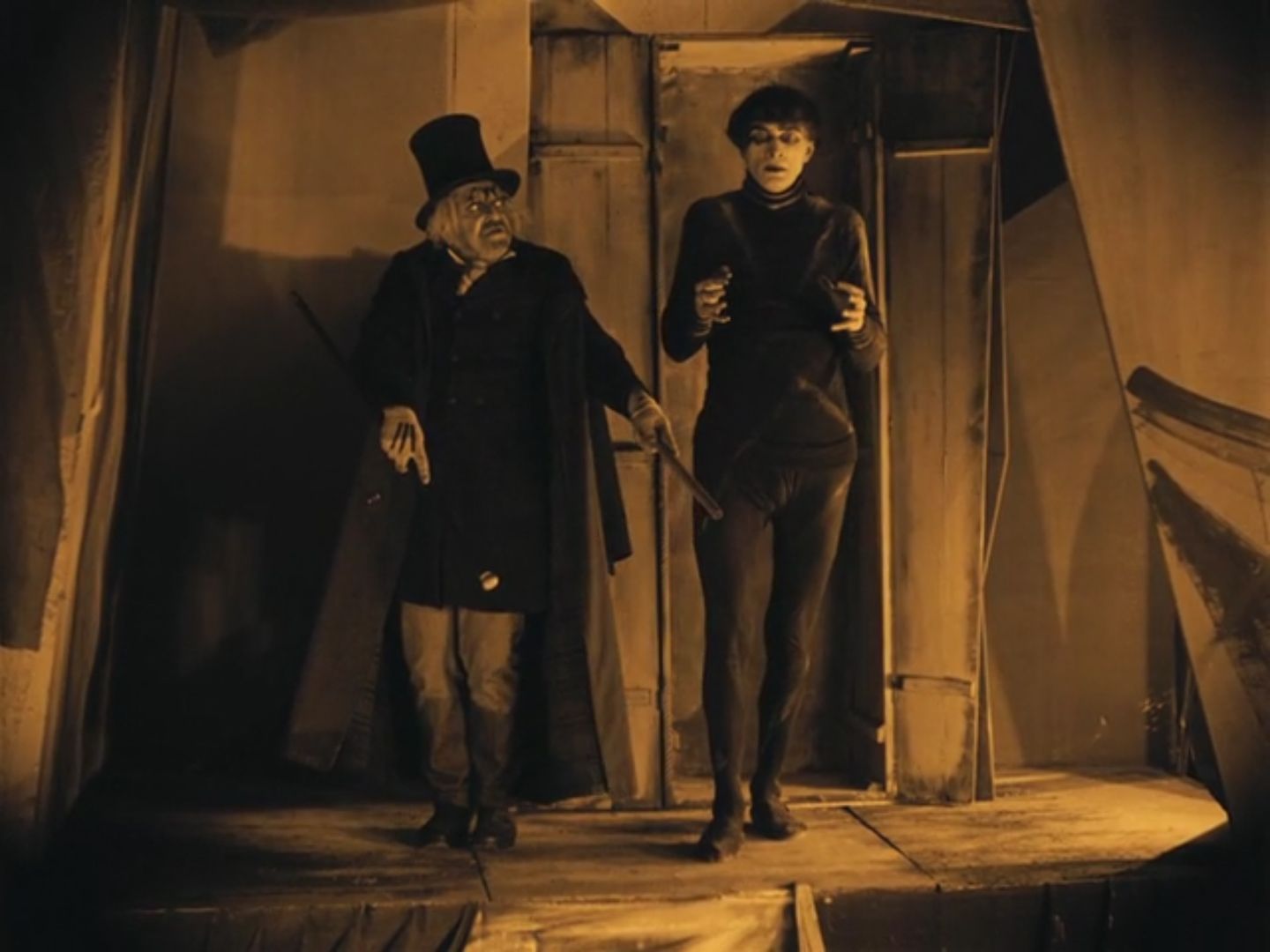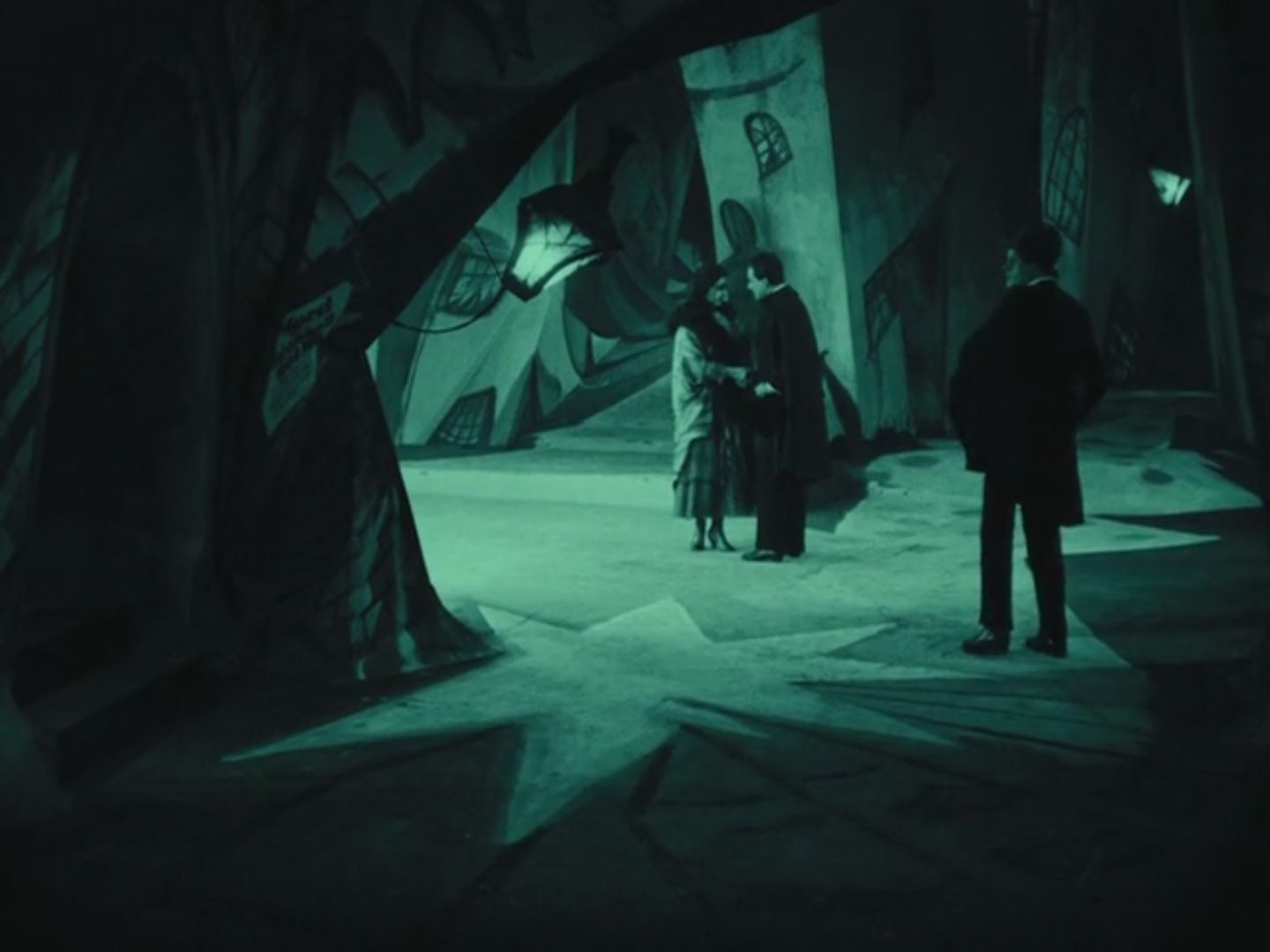RETRO MOVIE REVIEW: THE CABINET OF DR. CALIGARI, 1920
 100 years later. This classic film still has legs!
100 years later. This classic film still has legs!
Praised as the fist true horror film, THE CABINET OF DR. CALIGARI, 1920, is a silent German horror/psychological thriller directed by Robert Wiene and written by Hans Janowits and Carl Mayer.  Film historians and critics consider it to be the essential standard of German Expressionism cinema. In the realm of film horror and noir, THE CABINET OF DR. CALIGARI is considered to be a major influence.
The look of the film is truly unique and it lends perfectly to the dark, dreamy tone, and mood of the haunting tale. The images are saturated with stark and striking blacks, harsh light, pointy shadows, and highlights with different color pallets. The unnatural set design by Hermann Warm, Walter Reimann, and Walter Röhrig is filled with tall buildings and landscapes that twist and curve at odd angles, like images from a fevered dream. The visual impression of the film had a strong influence on many filmmakers throughout the years. Terry Gilliam, of MONTY PYTHON“S FLYING CIRCUS fame, and Tim Burton are familiar filmmakers who have been influenced by the films visual style.  You can see it in such films as TIME BANDITS, 1980, THE ADVENTURE OF BARON MUNCHAUSEN, 1988, BRAZIL, 1985, BEETLEJUICE, 1988, BATMAN, 1989, and especially EDWARD SCISSORHANDS, 1990.
Janowits and Mayer“s screenplay was heavily influenced by their terrible experiences during World War I, which left them embittered by the military and distrustful of cruel and illogical authority. They also question the thin line between sanity and insanity during troubled times.
The film unfolds in six acts, making use of a “Rahmenerzählung”, or “Frame Story”“ style, which was very innovated for its time. Told in a fragmented flashback, the story is about a young man, Franzis (Friedrich Fehér), who attends a local fair with his friend that takes place in his hometown of Holstenwall.
Meanwhile, a mysterious man, Dr. Caligari (Werner Krauss), wants to secure a permit to showcase his somnambulist (a sleepwalker) named Cesare (Conrad Veidt) at the fair. The town clerk is rude and condescending to Dr. Caligari while dispensing the permit. Later that night he is mysteriously murdered.
 While at the fair, Franzis and his friend attend a showing of Dr. Caligari“s somnambulist display. As Dr. Caligari wakes Cesare from his death-like sleep, he dares anyone to ask the somnambulist any question, because he knows every secret, he knows the past and the future. Franzis“ friend rashly asks Cesare, “How long will I live?”“ Cesare“s answer is, “Till the break of dawn”¦”“ That night Franzis“ friend is mysteriously killed. Convinced that Dr. Caligari has something to do with his friend“s murder, Franzis begins a frantic investigation, which leads to many unnerving revelations. Through the haunted perception and the delirious state of Franzis“ narration the story twists, turns, and comes to a conclusion with a wild ending.
While at the fair, Franzis and his friend attend a showing of Dr. Caligari“s somnambulist display. As Dr. Caligari wakes Cesare from his death-like sleep, he dares anyone to ask the somnambulist any question, because he knows every secret, he knows the past and the future. Franzis“ friend rashly asks Cesare, “How long will I live?”“ Cesare“s answer is, “Till the break of dawn”¦”“ That night Franzis“ friend is mysteriously killed. Convinced that Dr. Caligari has something to do with his friend“s murder, Franzis begins a frantic investigation, which leads to many unnerving revelations. Through the haunted perception and the delirious state of Franzis“ narration the story twists, turns, and comes to a conclusion with a wild ending.
At a hundred years old the film still stands the test of time as a historical piece of cinematic art and entertainment. For horror lovers, this is a must see film that will take you back to the beginning of the genre.
Author Profile
- Lance Lucero
Warehouse 9 Productions, Ltd. (W9)
AWARD WINNING filmmaker and comic book creator
warehouse9pro.com
Latest entries
 Retro Movie ReviewsDecember 1, 2022RETRO MOVIE REVIEW: KILLER’S KISS, 1955
Retro Movie ReviewsDecember 1, 2022RETRO MOVIE REVIEW: KILLER’S KISS, 1955 Cinema CrusadersMarch 16, 2022RETRO MOVIE REVIEW: BRING ME THE HEAD OF ALFREDO GARCIA, 1974
Cinema CrusadersMarch 16, 2022RETRO MOVIE REVIEW: BRING ME THE HEAD OF ALFREDO GARCIA, 1974 Cinema CrusadersFebruary 18, 2022RETRO MOVIE REVIEW: HORROR EXPRESS, 1972
Cinema CrusadersFebruary 18, 2022RETRO MOVIE REVIEW: HORROR EXPRESS, 1972 Retro Movie ReviewsJanuary 18, 2022RETRO MOVIE REVIEW: CORVETTE SUMMER, 1978
Retro Movie ReviewsJanuary 18, 2022RETRO MOVIE REVIEW: CORVETTE SUMMER, 1978





